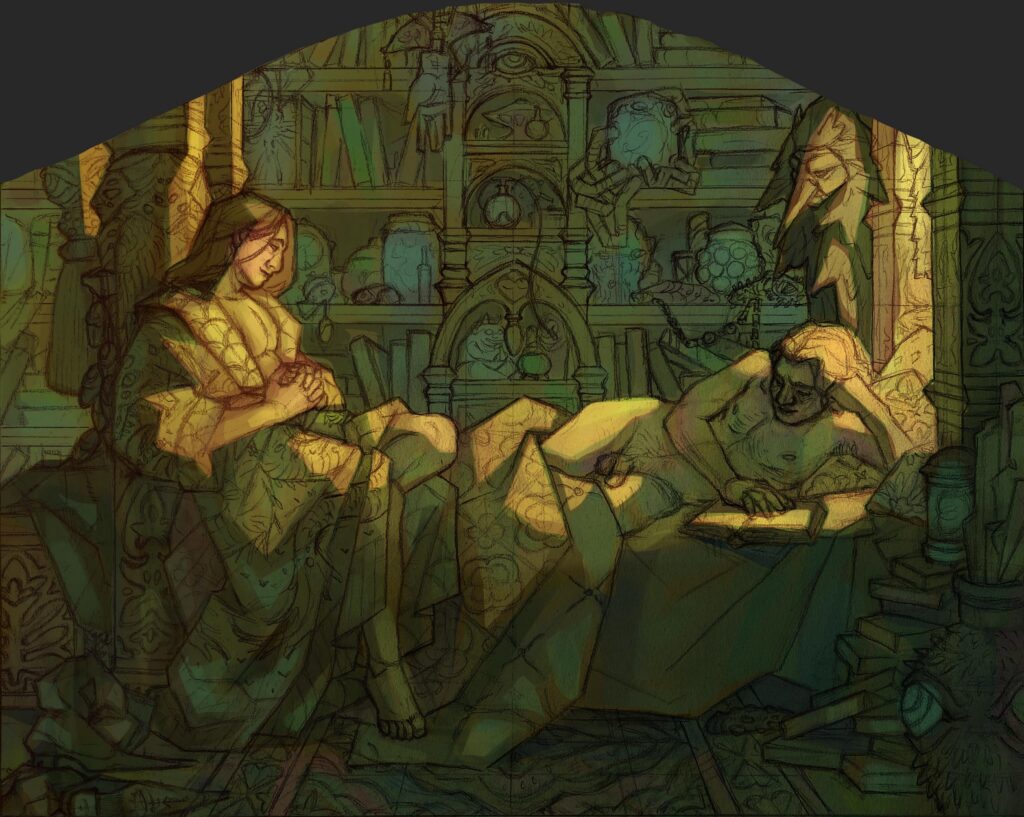Fantaasiakunstiga on vahel nõnda, et võid aktiivselt mingi teemaga tegeleda, ise tähelegi panemata, mis see täpselt on. Minu jaoks oli nõnda koletistega. Lõin peatumatu entusiasmiga aina enam tegelaskujusid, kes elasid varjatud topeltelu ning said oma tõelisel kujul eksisteerida ainult salajastes kogukondades… Ja muuhulgas olid nad tihti biseksuaalsed ja mittebinaarsed.
Minu tegelased olid koletislikud ja nad olid kväärid ja kui ma vaatasin neid kahte kõrvuti, sain ma aru, et need oli suuresti üks ja sama. Olla koletis, tähendab lõhkuda sotsiaalseid norme, ja olla kväär tähendab ühiskonnas esile kutsuda vastikust ja hirmu.
With fantasy art, sometimes you can actively engage with a theme without even realizing what it is exactly. For me, this was the case with monsters. I created an increasing number of characters, each living a hidden double life and able to exist in their true form only within secret communities… And among other things, they were often bisexual and non-binary.
My characters were monstrous, and they were queer, and when I looked at these two side by side, I realized that they were largely one and the same. To be a monster means to break social norms, and to be queer means to provoke disgust and fear in society. “Monsters in the Bedroom” is a painting where these two life forms meet and become one.







